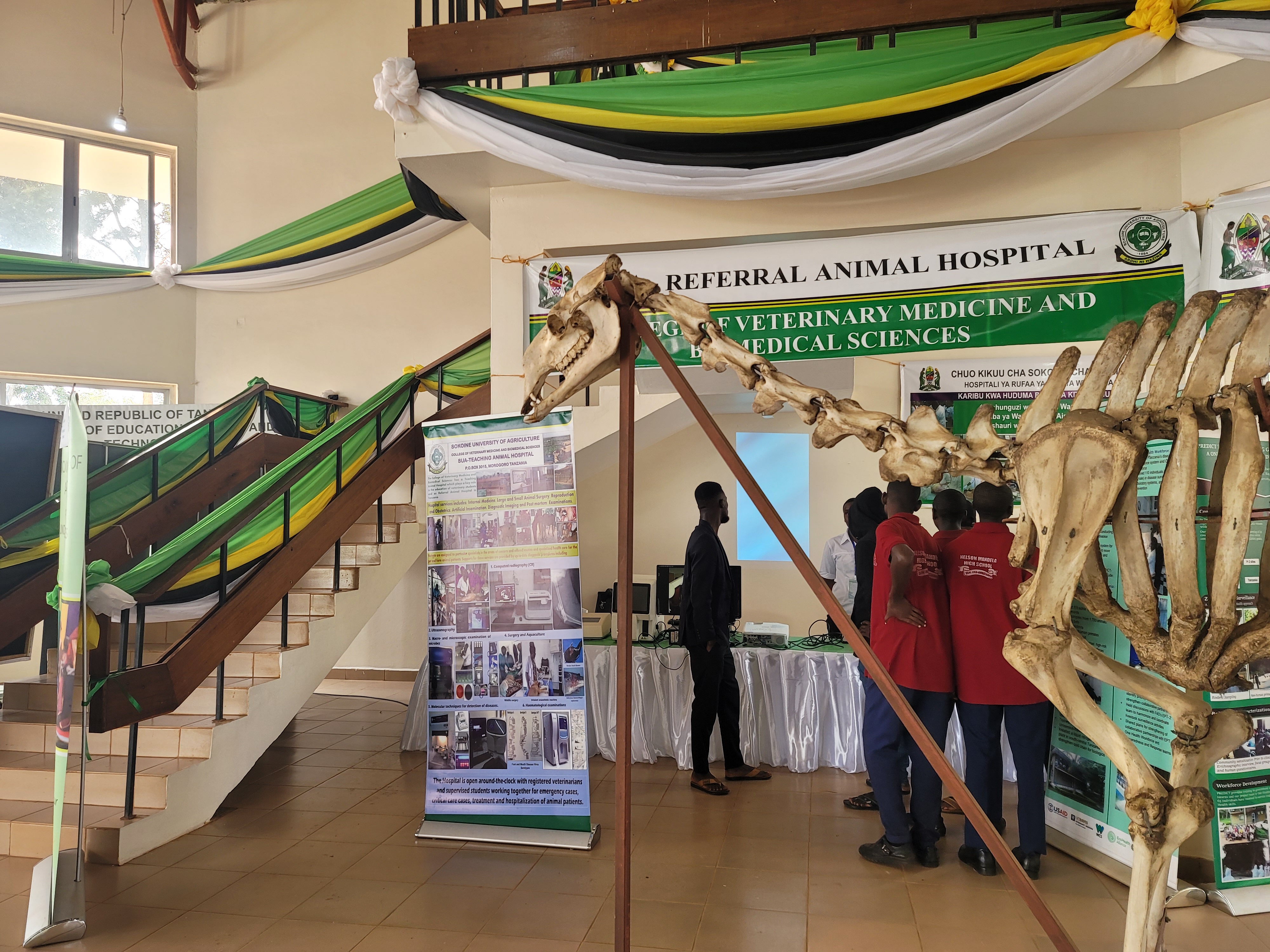The College of Veterinary Medicine and Biomedical Sciences is participating in the 30th Nanenane Exhibitions 2023 for Farmers, Livestock keepers and Fishermen. The theme for this year (2023) is “Vijana na Wanawake ni msingi imara wa mifumo endelevu ya chakula” literally means “Youth and Women are the Solid Foundation of Sustainable Food Systems” As part of the main stakeholders in forming sustainable food systems, the college displays various items for showcase. Arrangement of the exhibitions is as follows:-
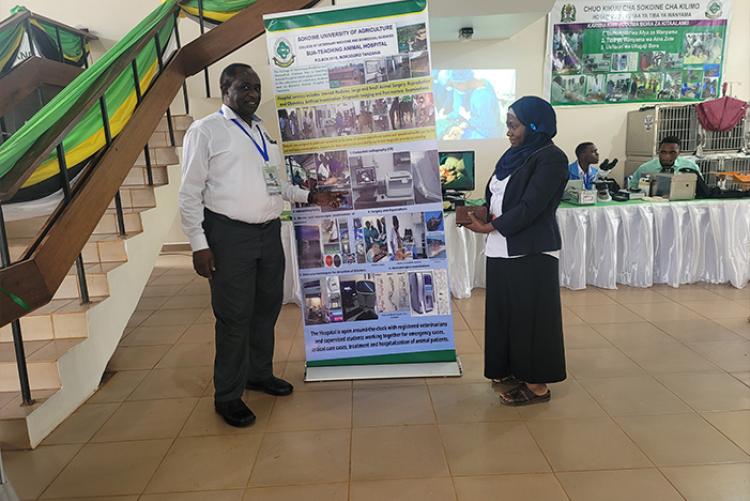
(a) Core Functions of the College of Veterinary Medicine and Biomedical Sciences
Visitors to the college are informed about the college and SUA by oral communication and provision of brochures with the information on the history of the college, departments, academic programs, student profile and a list of collaborators. Presents posters with summarized information on Vision, Mission and Mandate of the college and Core functions including: - (i) training (ii) research (iii) outreach and (iv) consultancy.
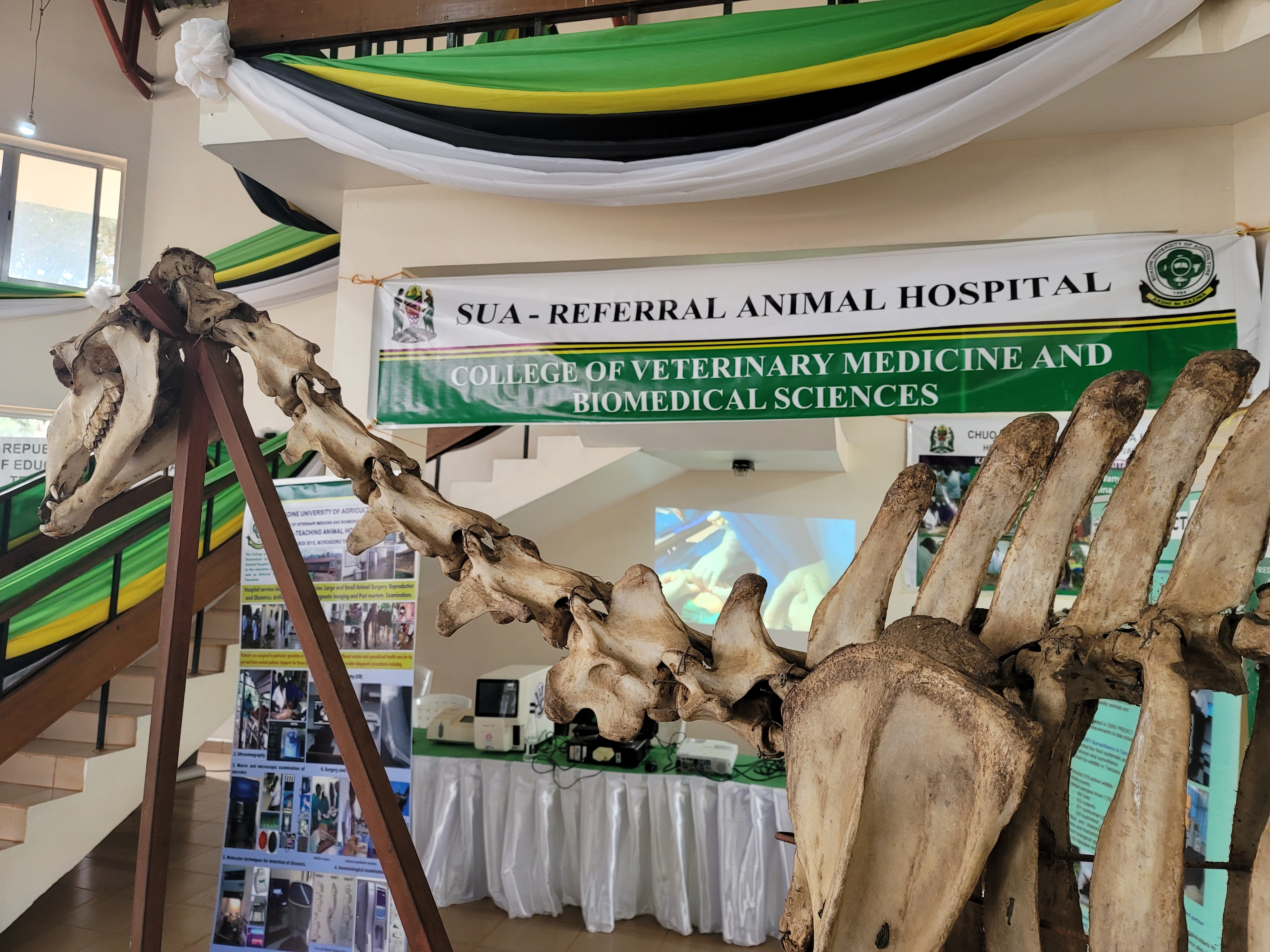
(b) Services provided by the SUA Animal Teaching Hospital
Visitors are provided with leaflets and watch still pictures and video clips describing different activities performed by the hospital. These include management of clinical cases such as diseases diagnosis, treatment and vaccination; Offered diagnostic services such digital x-ray and ultrasound, molecular technology, serological assays, microscopy as well as hematological and biochemical analyses for detection of infections; technologies such as artificial insemination in cattle. Minor and major surgery performed: castration and spaying.
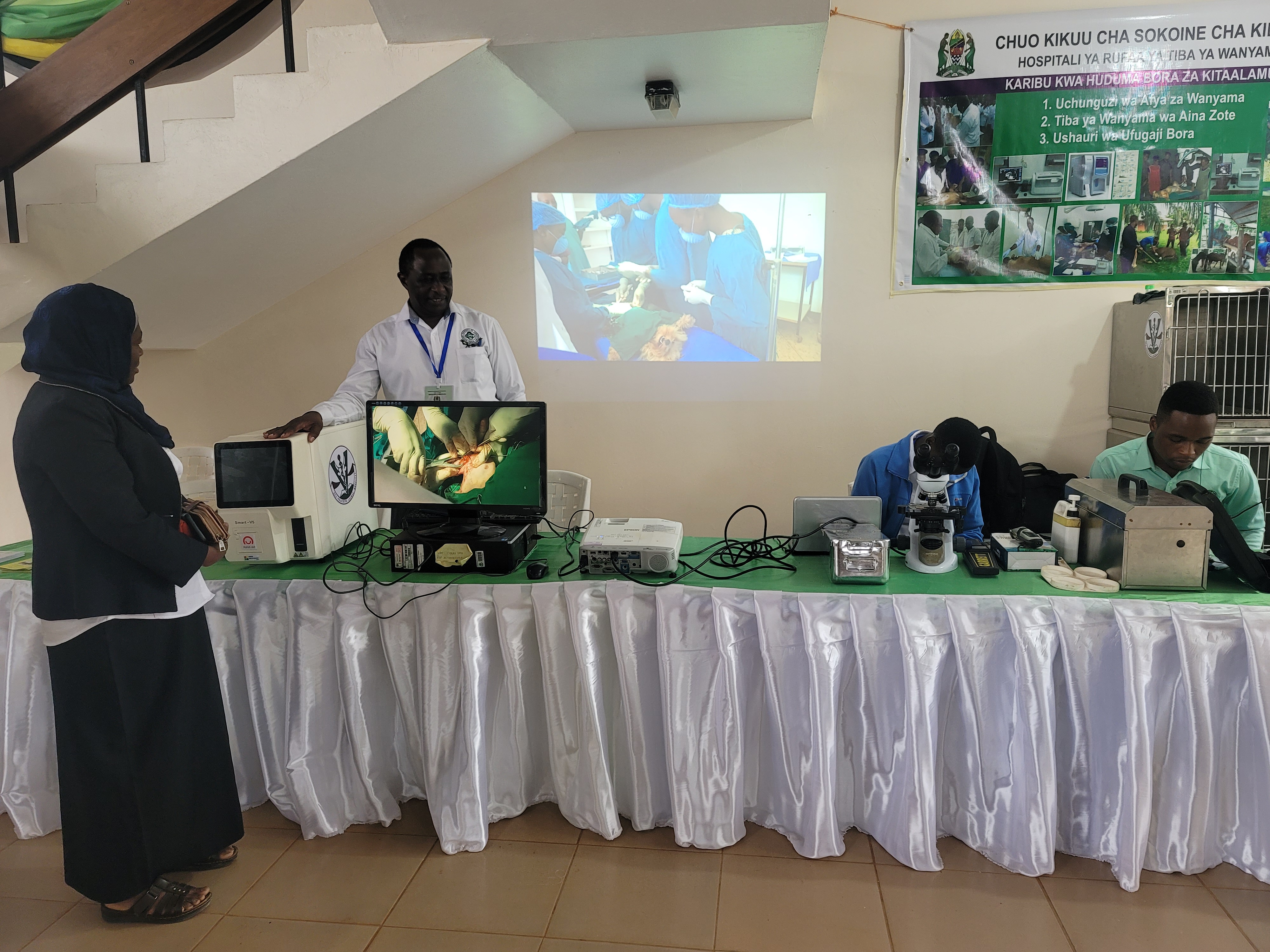
(c) Prevention of zoonotic diseases from animals to humans
Demonstrates various instruments used to collect samples from wild animals for the detection of viruses with potential to cause infections in humans. Such instruments include biohazard bags, face shield and masks. Informs visitors on viruses that have been detected from wild animals such as buffalo, wildebeest, bats and canine species including corona viruses, rabies viruses, marburg and zika viruses. Books are also displayed to provide information on how to manage bats in human settlements. The purpose of this project is to predict and get prepared for future disease outbreaks and possibility of developing vaccines.
(d) SACIDS-Mobile genomic laboratory, AfyaData, AfyaMsafiri, Disaster management system and Nanotechnologies (Nanopore sequencing and nanobody)
Demonstrates technological advancement invented to facilitate disease surveillance, control and ultimate eradication. This advance in technology and digitalization are intended to improve economic livelihoods and wellbeing of humans, animals and environment through One Health concept, launched in 2008 at the SACIDS-Foundation for One Health. Since then, several innovative platforms have been developed and deployed to deter infectious diseases and disasters in the Global South. For instance, AfyaData, AfyaMsafiri, Disaster management system, system thinking, BigData and nanotechnologies (Nanopore sequencing platform and nanobodies). Visitors are also informed through oral communication on lessons learnt from COVID-19 pandemic, existing weak and poor health infrastructure in the Global South and new in-house innovations needed for fighting ravaging diseases. Informed also on plans underway to develop and commercialize technologies that have been locally developed to improve human livelihood across the African continent; training of postgraduate students as well as transfer technologies to most needy countries across the globe.
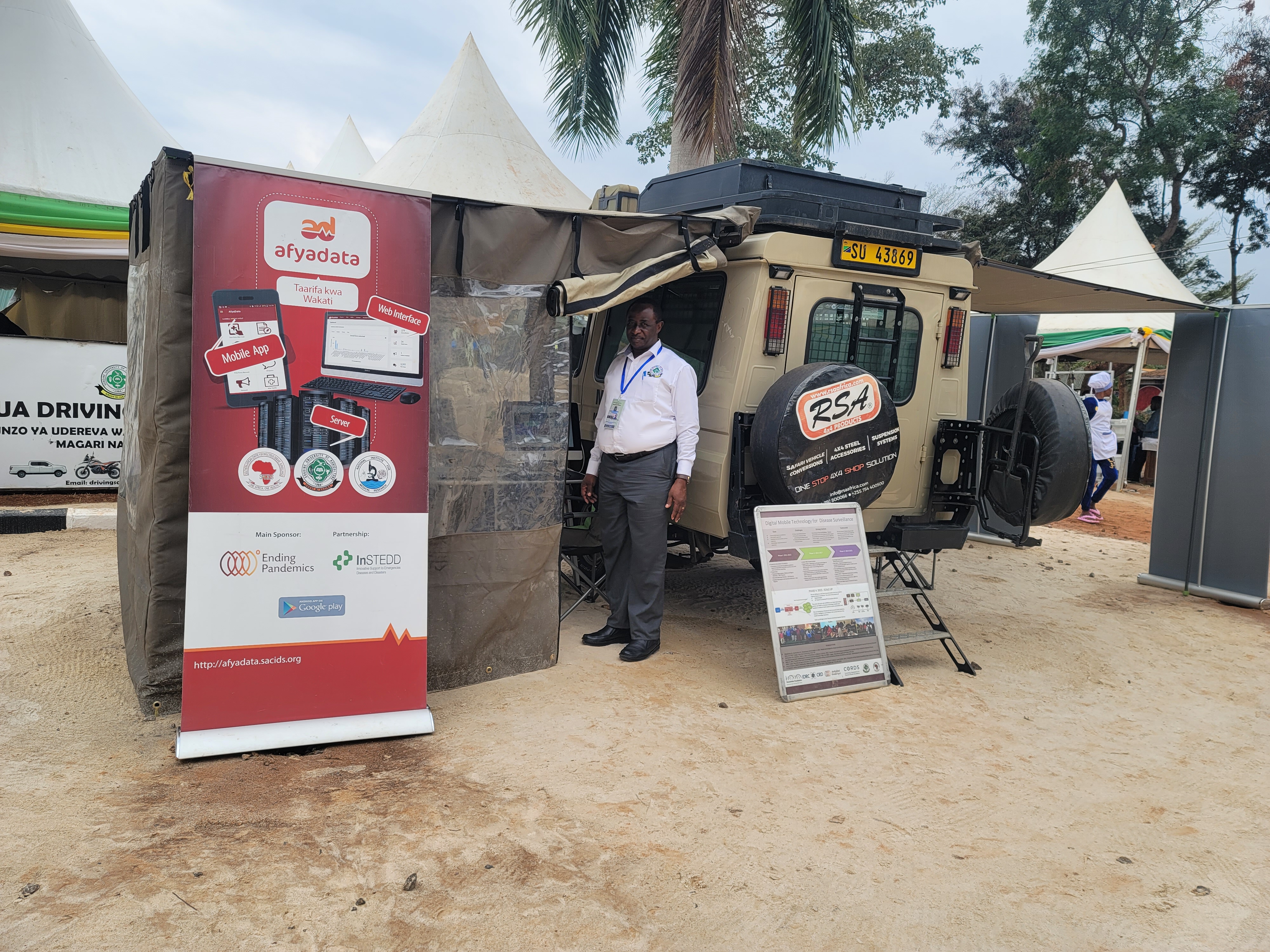
(d) Local chicken improvement strategy
Visitors are informed by oral communication and through displayed poster and leaflets on how to keep local chicken and general husbandry; vaccination regime on Newcastle, Gumboro and fowpox; control of intestinal parasites by deworming and external parasites including mice, lice and flees; how to protect chicks against rodents and wild birds; proper ways of keeping eggs to increase hatchability percentage; feeds and feed formulation and chicken house design and construction. Displays three local chicken eco-types; including kuchi, ching’wekwe and Morogoro medium. Visitors are also educated on local chicken improvement and how local chicken can increase household economy. In line with the theme for this year, education offered on local chicken focuses on improving genetic potential of local chicken for meat and egg production, empowers youth and women for self-employment. These groups of people form a cornerstone for sustainable food systems at family level as they are the people who usually take care of families.; In addition, visitors are informed on the use of artificial insemination technology to improve breeds of chicken for increased household income.
